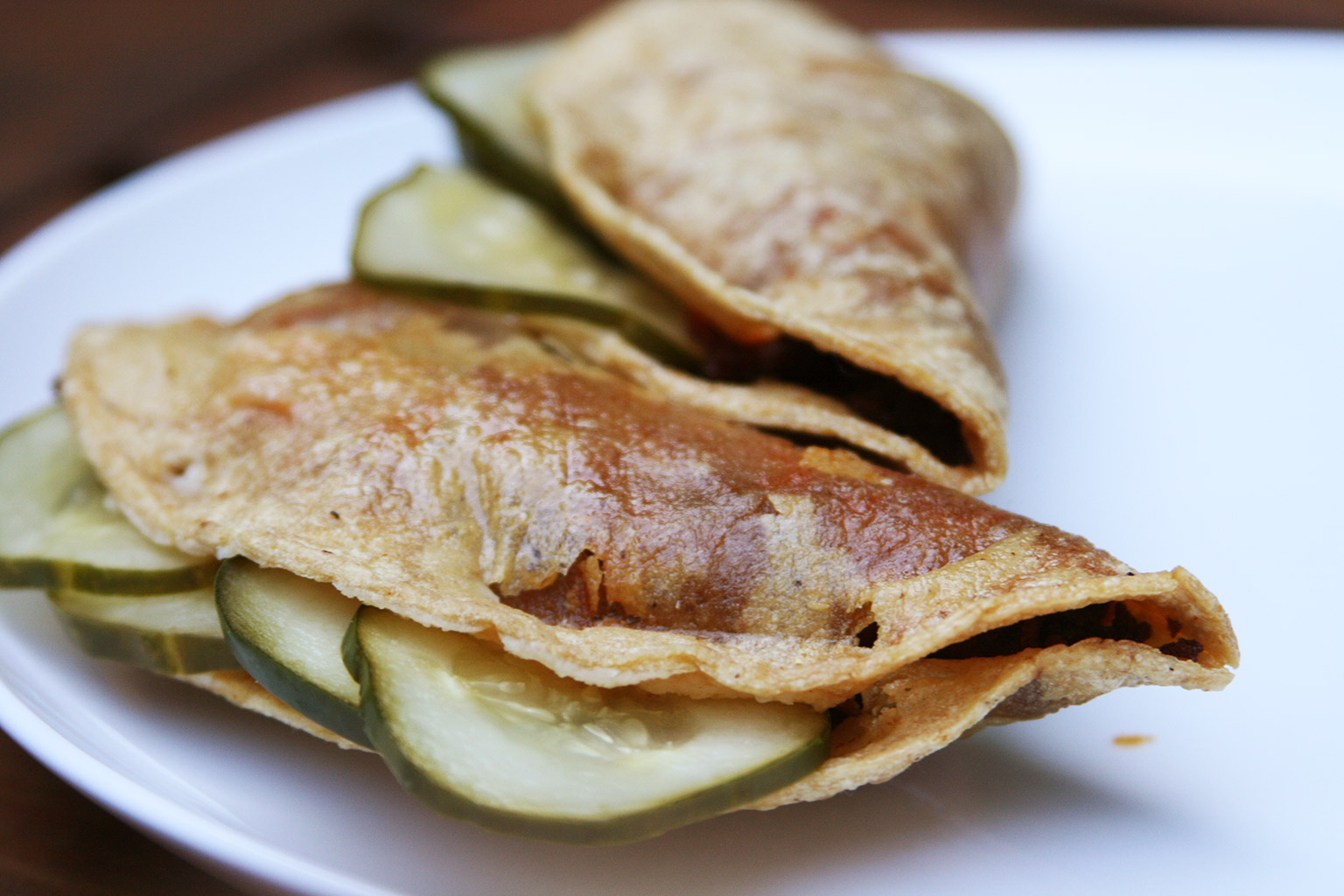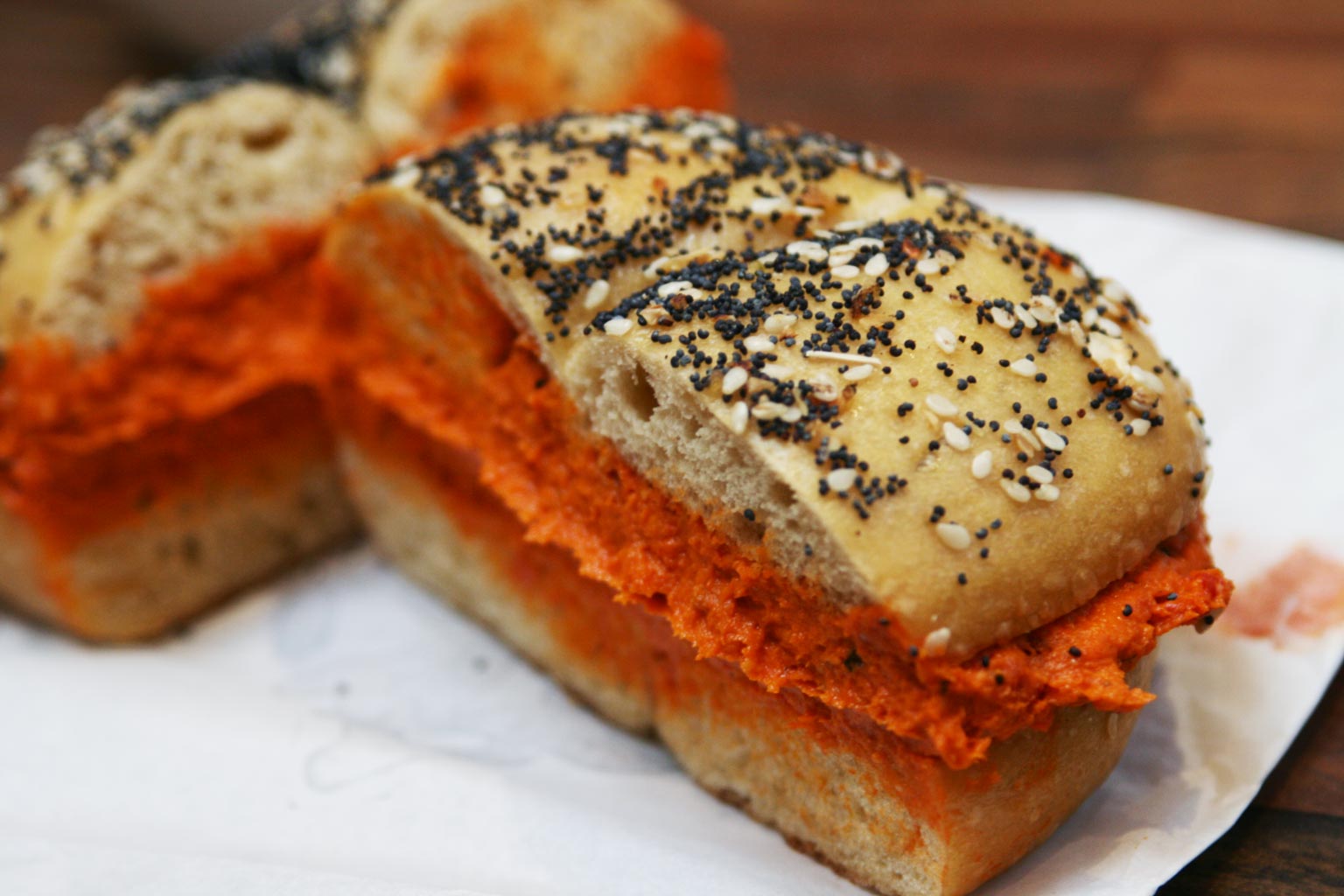I remember a few years ago thinking to myself “MAN would it suck to be a vegan AND have a gluten allergy.” Most likely I had a giant chunk of bread in my mouth as I mulled this over.
It’s true, when you’re already eschewing meat, dairy, eggs and all other animal products in your diet and you add to that verboten list any food products containing gluten—especially given all the heavenly bread in NYC—it can certainly infuse some rigorous mental gymnastics into the joyous act of eating at first.
But we’ve been experimenting of late, not with a total write-off of all things gluten (I mean, that would equal no beer, which equals not happening), but with a decrease in the amount of overly processed foods that tend to contain gluten as a thickening/binding agent and a little less bread, as hard as that may be. And, not to go into too much detail here, but we’ve noticed some positive results—more energy, and less overall physical malaise or bloat-y-ness (sorry).
The rub—gluten-free can be a bit tough to do when eating Italian. We’re not huge fans of the pre-packaged gluten-free breads + pastas out there—they just taste…off to us. Risotto, on the other hand, is 100% gluten-free, being an Italian rice product, and much more along the lines of what we’ve been wanting to eat lately in the whole foods vs. processed foods sense.
Recently, craving a traditional red sauce Italian pasta meal, we decided to employ my father-in-law’s delectable homemade marinara sauce—we posted that recipe a while back with our vegan lasagna write-up—in a creamy risotto dish and then take a stab at making some gluten-free vegan ‘meat’ balls. We were crazy excited with the result and thought we’d share it with you, dear Reader.
The Sauce
So, you’ve got three options with the marinara sauce: 1) Take the path of least resistance and pick up a jar of your favorite store-bought brand; 2) whip up your favorite homemade sauce; or 3) if you don’t have a recipe you use or want to try something new, give Papa Joe’s Marinara a try. If you’ve never made your own marinara, you should know that we highly recommend it. It’s a great way to spend a lazy, rainy Sunday afternoon and warms up your home with a lovely, comforting feeling. Win-win. And the marinara we make is absolutely delicious on, um, pretty much everything. Not to brag. So, if you’re making it, do that ahead of time; if you’re buying it, add it to the shopping list.
The ‘Meat’balls
Full disclosure: This is a first-time attempt at this kind of vegan ‘meat’ ball—we’ve made plenty in the past that use vital wheat gluten (the base of seitan) as a binder, but never ones that are gluten-free—but we absolutely loved these and think you will too. Assuming you like awesome things. Other potentially awesome ones—Isa Chandra Moskowitz’s Tofu Balls or VegNews’ tofu-free, rice + walnut take. Want to give ours a try though? Here’s what you need:
+ 2 Large Shallots, peeled and diced
+ 5 Cloves Garlic, smashed, peeled, and diced
+ 1 Medium Eggplant, peeled and diced into small cubes
+ 2 Tbsp Extra Virgin Olive Oil
+ 2 Tsp Liquid Smoke
+ 1 Tbsp Nutritional Yeast
+ 5 Tbsp Brown Rice Flour
+ .5 Cup Cooked Quinoa
+ 1 Tsp Dijon Mustard
+ 1 Tbsp Oregano
+ 2 Tsp Sea Salt
+ 2 Tsp Freshly Ground Black Pepper
+ Canola or Another Light Frying Oil
First, warm a tablespoon of oil in a heavy skillet over medium heat for a few minutes, but don’t let the olive oil burn or smoke. Once it’s warmed, throw in the diced shallot; it should sizzle when you do. Cook for ten minutes, browning the shallot. If it begins to blacken, stir and turn down the heat a bit. Now add the diced garlic, cook for another five minutes, stirring occasionally. Add the eggplant and liquid smoke, and immediately cover, cooking for another five minutes. Uncover and stir—watch your eyes, the smoke can aggravate them with the rising steam—and add the second tablespoon of olive oil, stirring to distribute evenly. Saute the mixture for another ten or so minutes until the eggplant begins to soften, brown, and break down to reduce by about half in volume. Remove from heat.
In a large mixing bowl, combine the remaining ingredients (from nutritional yeast down on the list above). For the quinoa, you should just be able to follow the directions on the box or look them up on line, but, generally, you add one cup of dry quinoa to two cups of boiling water or broth (we like broth), reduce to a simmer, and cook covered for 15 or so minutes, until the quinoa grains begin to ‘unravel’ a bit. In this case, we made a full cup of quinoa, as it’s easier to cook than a half cup, and used the other half for a salad, but you can also just try to make a half cup of quinoa if you want. Now carefully add the eggplant mixture to the rest of the ingredients in the bowl and stir thoroughly. The resulting mixture should prove to be pretty cohesive, binding the broken-down eggplant mixture and liquids to the rice flour and yeast. If you think it’s too wet, add some more rice flour little by little, mixing as you go.
Chill the mixture in the fridge for at least an hour, then, in a large pan, warm frying oil at least deep enough to cover half of the balls you form. Using a spoon and your hands, roll small balls from the mixture and carefully add them to the oil in small batches so they don’t touch each other. Carefully roll the balls over once the submerged side is sufficiently browned, then remove the fully cooked balls, setting aside in a bowl lined with paper towels to absorb excess oil. Once you’re done, if you like, you can set aside the oil to cool and then drain and store to re-use later. We like to do that since it takes so much oil to deep fry anything.
The Risotto
Honestly, we think risotto is one of the simplest things to cook and fun to boot. Essentially, you just need to keep the arborio (risotto rice) sauteing over medium heat a constantly submerged, first with a cup or so of dry white wine, subsequently with water or broth. With this one, we like to move to water to keep the risotto clean and white and then add a little bit of nutritional yeast as we go to give it a slightly cheesy flavor. But you pretty much cook and stir to create the creaminess, continuing to add more liquid as it’s absorbed and then it’s done when it’s soft and creamy enough for you. You can find more precise directions on risotto packaging, no doubt, but we recommend hanging out with a glass of wine and your favorite person or people in the kitchen as you stir and chat.
Top with chopped scallions or toasted pine nuts and you’re done. We like to take it easy on the red sauce with this recipe, using it sparingly and providing a nice contrast to the creamy savoriness of the rest of the dish. You can add your favorite vegan cheese if you like or keep it simple if you’re trending toward the whole, unprocessed foods of late. Enjoy!



